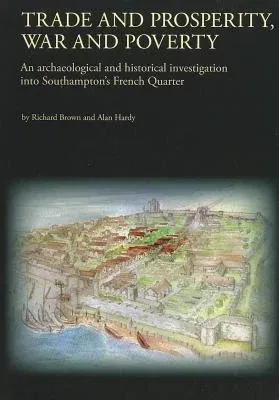Richard Brown
(Author)Trade and Prosperity, War and Poverty: An Archaeological and Historical Investigation Into Southampton's French QuarterPaperback, 31 August 2011

Qty
1
Turbo
Ships in 2 - 3 days
In Stock
Free Delivery
Cash on Delivery
15 Days
Free Returns
Secure Checkout

Part of Series
Oxford Archaeology Monograph
Print Length
375 pages
Language
English
Publisher
Oxford Archaeological Unit
Date Published
31 Aug 2011
ISBN-10
0904220672
ISBN-13
9780904220674
Description
Product Details
Book Format:
Paperback
Country of Origin:
GB
Date Published:
31 August 2011
Dimensions:
29.46 x
21.08 x
2.29 cm
ISBN-10:
0904220672
ISBN-13:
9780904220674
Language:
English
Pages:
375
Publisher:
Series:
Weight:
1406.14 gm